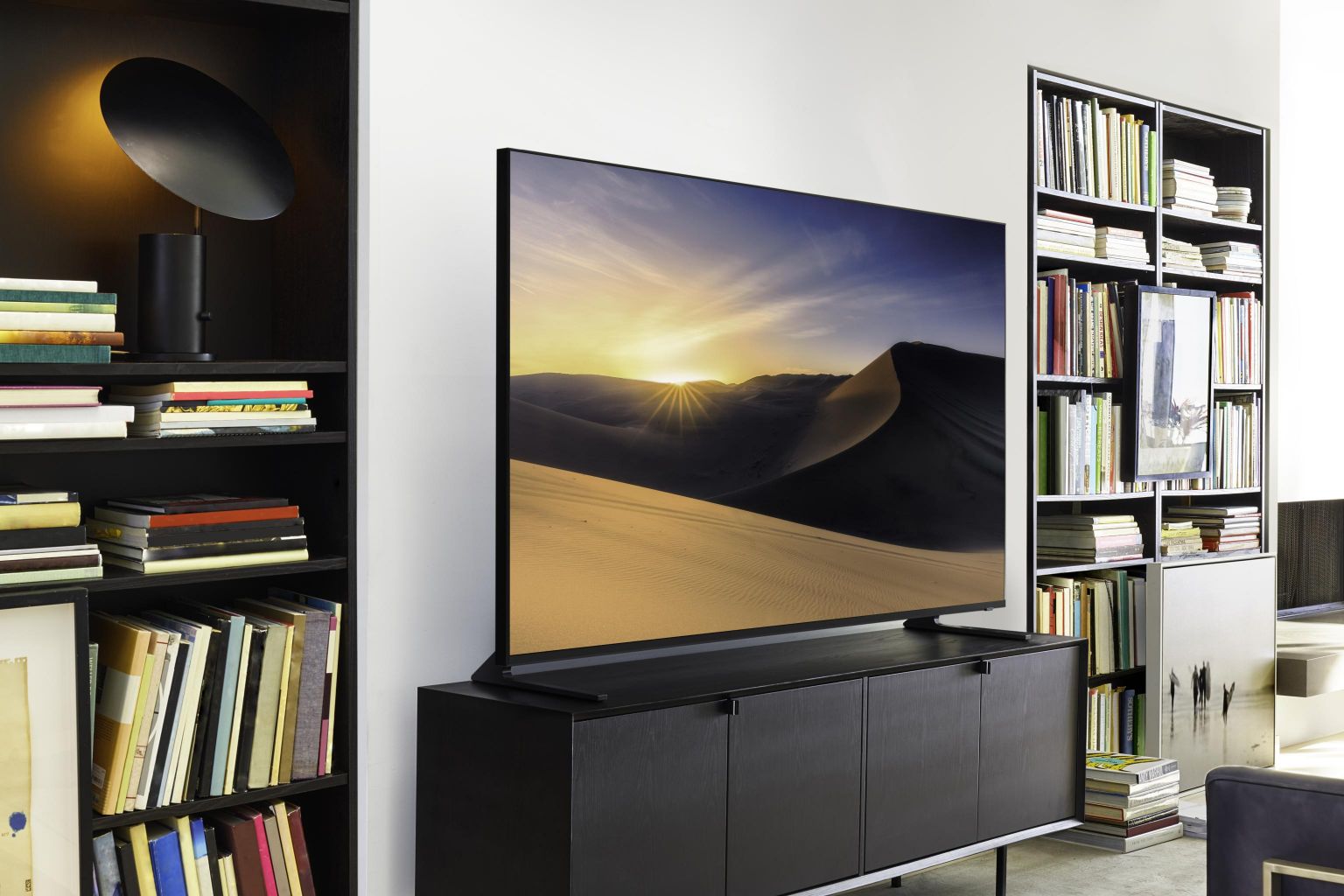Tech review: Samsung Qled Q900R a pricey but excellent 8K TV
Sign up now: Get ST's newsletters delivered to your inbox

The Samsung Qled Q900R is Samsung's first 8K television set with a 7,680 x 4,320 pixels screen resolution, four times the number of pixels as a 4K TV.
PHOTO: LIANHE ZAOBAO
Vincent Chang
Follow topic:
Samsung is tackling the weaknesses of its quantum-dot television sets, or Qled for short, one by one.
Last year, the South Korean firm switched to a grid of backlights, known as full-array local dimming (Fald) for its top Qled TVs in a bid to achieve the deep blacks seen on the organic light-emitting diodes (Oled) technology used by its rivals like LG, Panasonic and Sony in their premium models.
Samsung's focus this year is the wide viewing angle of its TVs, which tend to be inferior to Oled models.
Thanks to a new optical layer, the latest Samsung Qled Q900R succeeds admirably at this. Looking from the sides, images do not look as washed out compared to older Qled TVs, though Oled TVs still perform slightly better.
The Q900R is also Samsung's first 8K television set with a 7,680 x 4,320 pixels screen resolution, four times the number of pixels as a 4K TV.
However, there is barely any 8K content to watch at the moment. The only 8K video I watched was the built-in demo video in the TV itself. While there are a handful of 8K videos on YouTube, the Q900R's built-in YouTube app supports only up to 4K resolution, which seems like a wasted opportunity.
The good news is that the Q900R has an excellent upscaling feature that uses machine-learning to understand how to fill in missing pixels to produce an 8K quality video from a lower-resolution source video.
In a side-by-side comparison, the upscaler was much better at creating a detailed high-resolution picture and reducing noise from a low-resolution source than a mid-tier Samsung TV.
The upscaler works its magic on almost all video sources (except when connected to a computer), from the TV's built-in Netflix app to a movie in a Blu-ray player.
But there is a limit to what the upscaler can do. A 720p video, for instance, will still look soft and diffused compared to a higher-resolution video.
Samsung says it will periodically upgrade the upscaler via a software update over the Internet.
Like its predecessor, the Q900R uses a similar Fald backlight system that leads to minimal blooming from light sources. The inky blacks on the Q900R are almost as deep as the ones by Oled TVs.
-
FOR
- Much improved viewing angles over previous model
- Excellent upscaling feature
- Smooth and responsive interface
AGAINST
- Pricey
- Local dimming can occasionally cause screen artefacts
- Lack of 8K content
SPECS
Price: $10,999 (65 inches), $16,999 (75 inches), $29,999 (82 inches), $99,999 (98 inches)
Picture features: Maximum resolution of 7,680 x 4,320 pixels, HDR10+, HLG
Audio features: 60W output (4.2ch), Dolby Digital Plus
Operating system: Tizen OS
Connectivity: 4 x HDMI, 3 x USB, optical output, Ethernet, Wi-Fi
RATING
Features: 4.5/5
Design: 5/5
Performance: 4/5
Value for money: 3/5
Overall: 4.5/5
ST Tech Editor's Choice
The Samsung set is also much brighter, with a peak brightness of 4,000 nits (for the 75-inch model and larger) compared to 2,000 nits for older models.
But the backlights, which operate automatically, can sometimes cause visual artefacts. For example, at the start of the movie Blade Runner 2049, which opens with paragraphs of white text against a dark background, the TV tries to compensate for the brightness of the text by adjusting the backlights. But, instead, this causes sections of the text to become dark and hard to read.
Overall, the Q900R offers great picture quality, though colours look a tad less vivid and punchy than last year's model.
Because of its backlights, the Q900R is a fair bit thicker than sleek Oled TVs. Like the case with last year's model, Samsung has embraced this with a design inspired by a picture frame.
The picture frame illusion is aided by the fact that the TV inputs and even its power supply unit are located in a separate One Connect box. This box connects to the TV via a single translucent cable and can be hidden out of sight.
If you prefer not to mount it on the wall, the Q900R comes with a pair of feet, which can be positioned either close to the middle or near the sides. When wall-mounted, these feet can be stored in two slots at the back of the TV.
Samsung is the first TV vendor to put the Apple TV app in its latest televisions. It is like having an Apple TV box integrated in the Q900R with access to videos, including 4K versions, in the iTunes Store. The app runs very smoothly, like the rest of the TV's interface which is based on Samsung's own Tizen operating system (OS).
Not only does Samsung's TV OS have all the essential apps, such as Netflix and Amazon Prime Video, it is also sleek, elegant and, most importantly, easy to use.
The TV can also act as a dashboard to control compatible smart home devices using the built-in SmartThings app. You can even issue voice commands through Samsung's Bixby voice assistant, but it is not as good as the Google Assistant at understanding me. Both assistants can be used to control the basic functions of the TV, such as turning it on and adjusting the volume.
Samsung has produced an excellent TV that is future-proof because of its 8K resolution. But it is also much more expensive than Samsung's top 4K Qled TV, which offer similar features.

